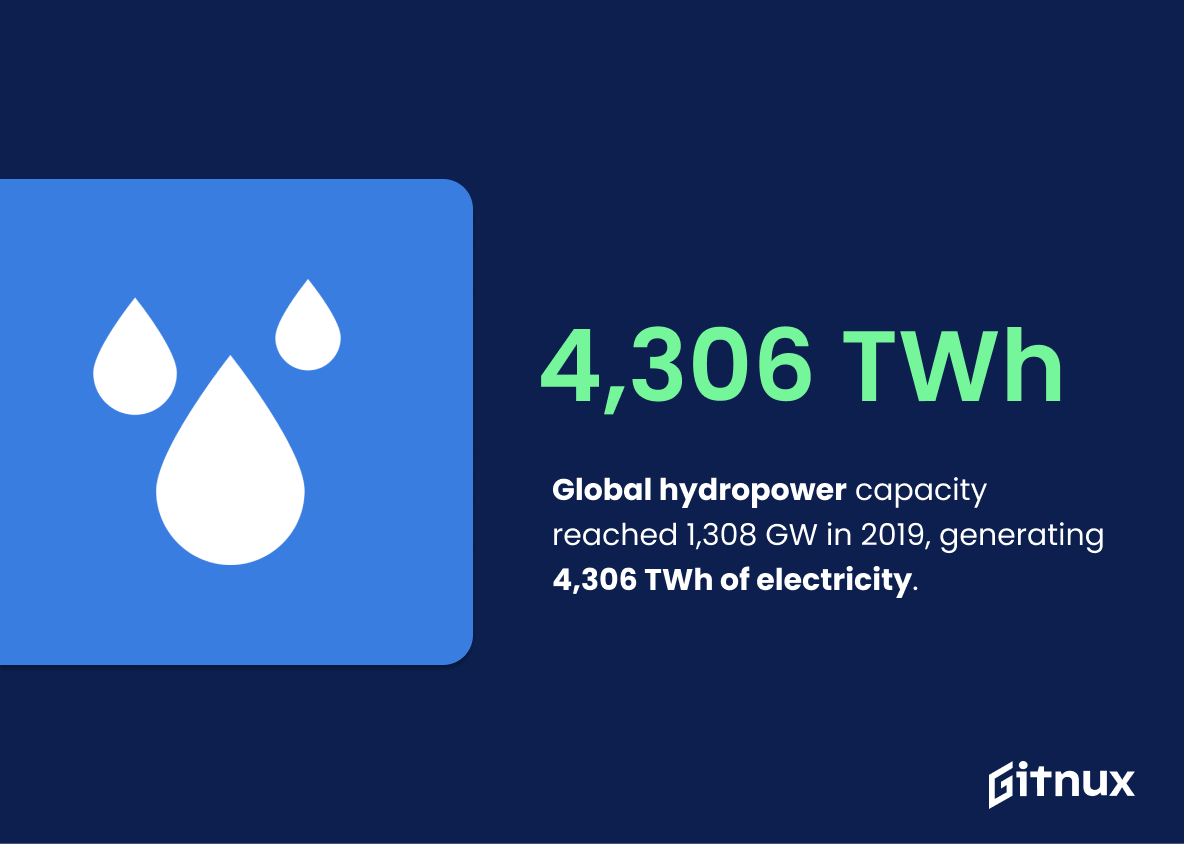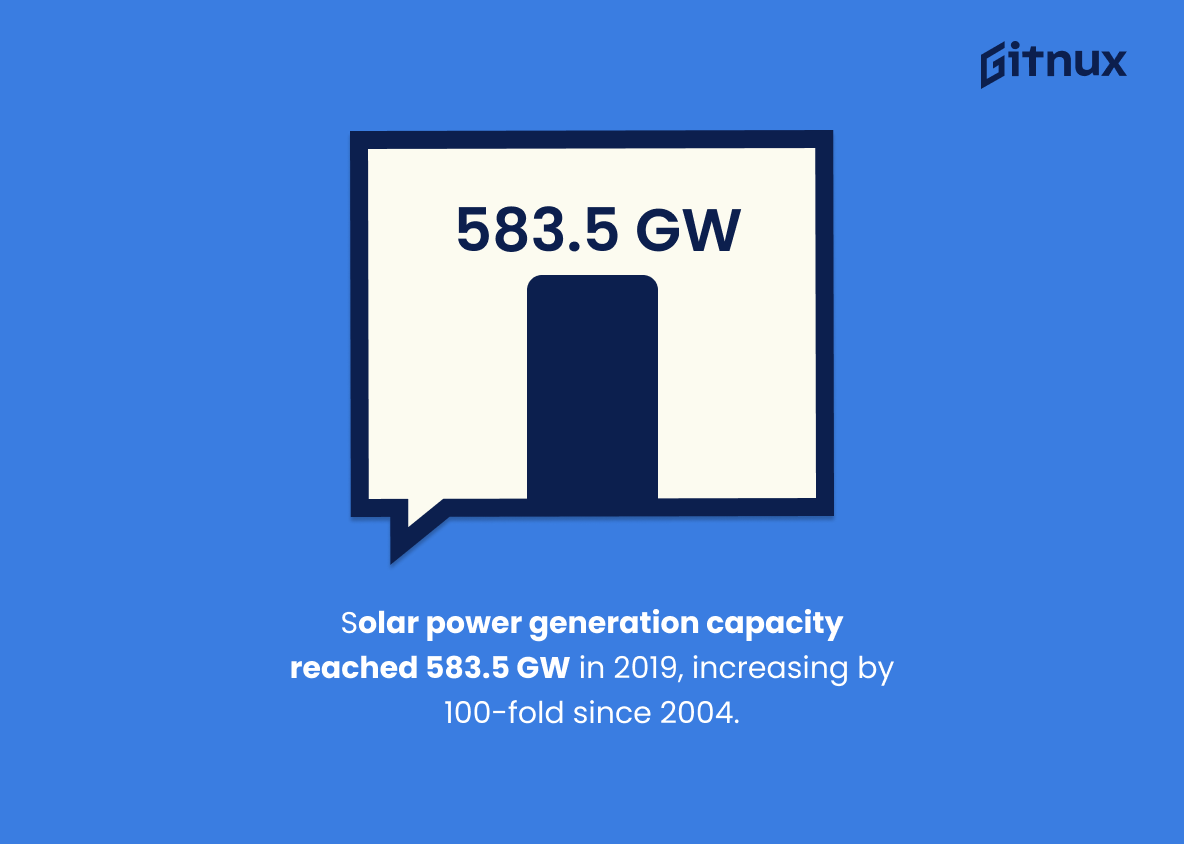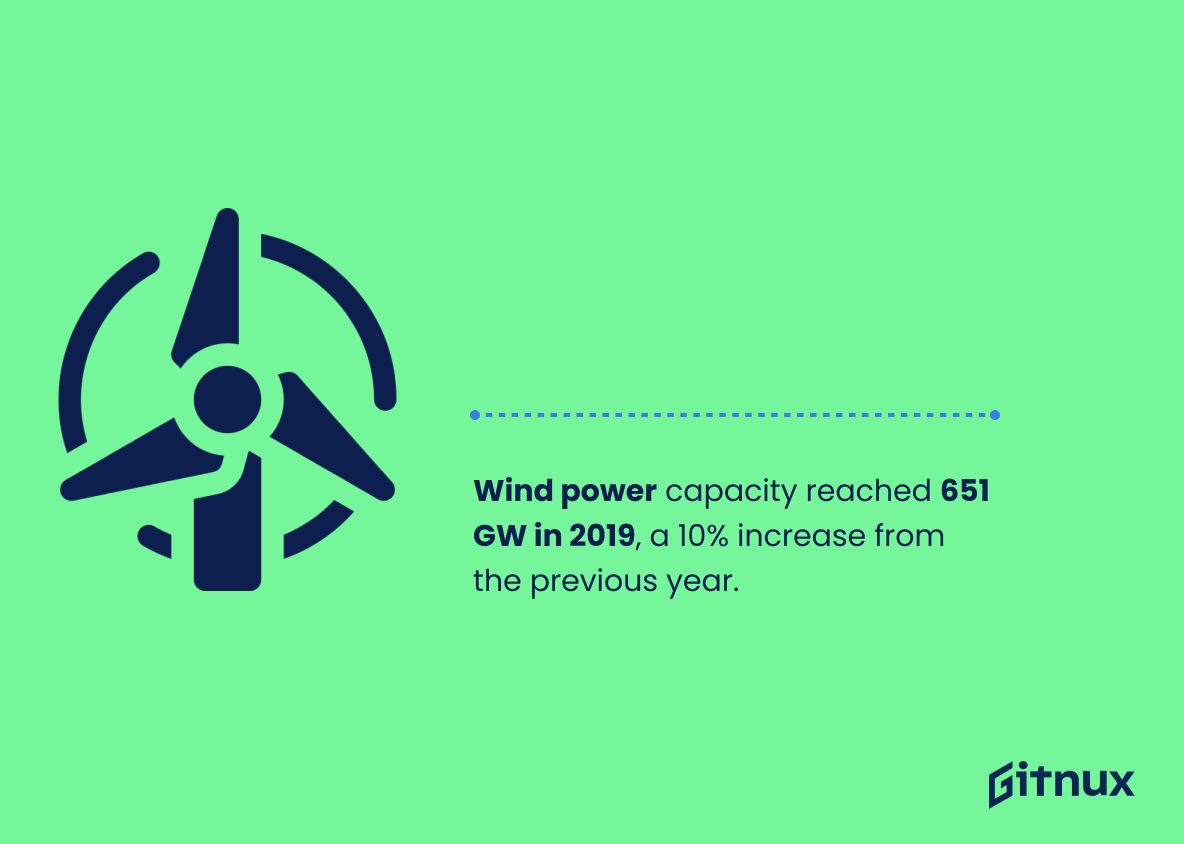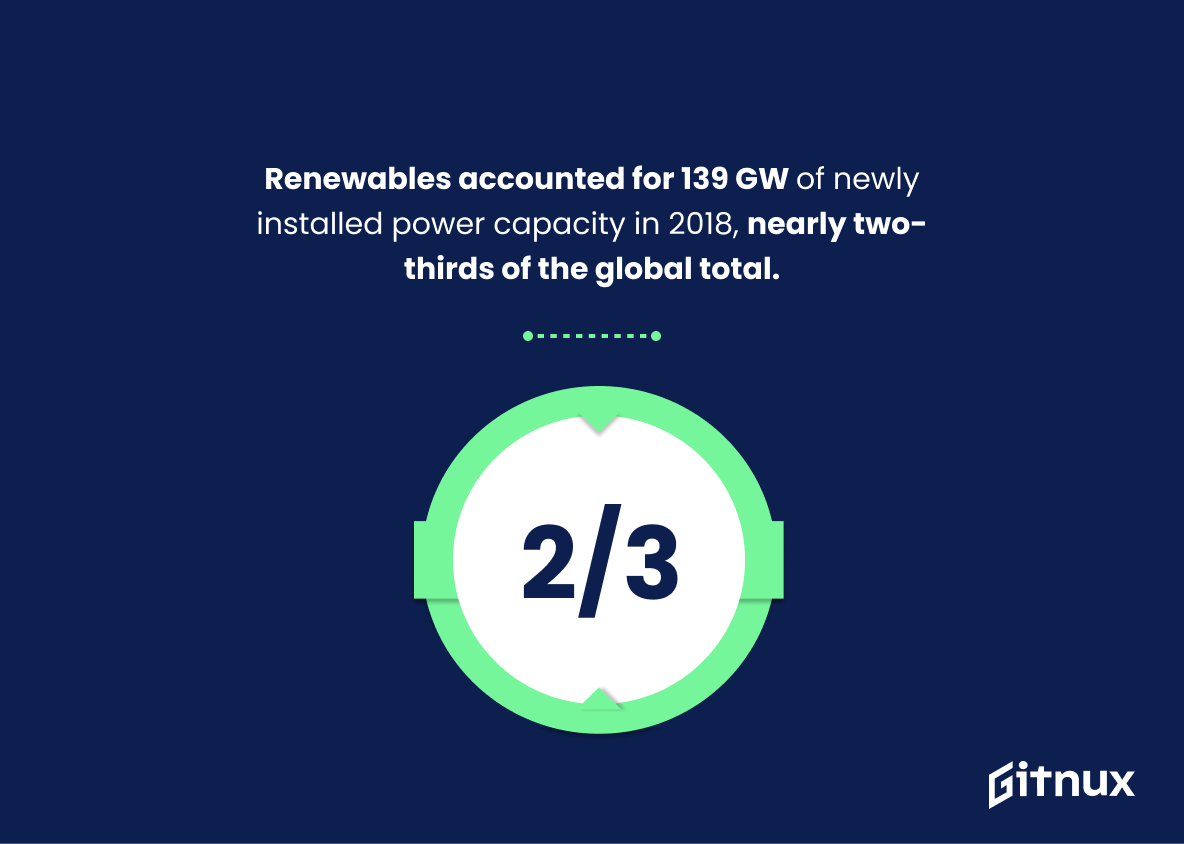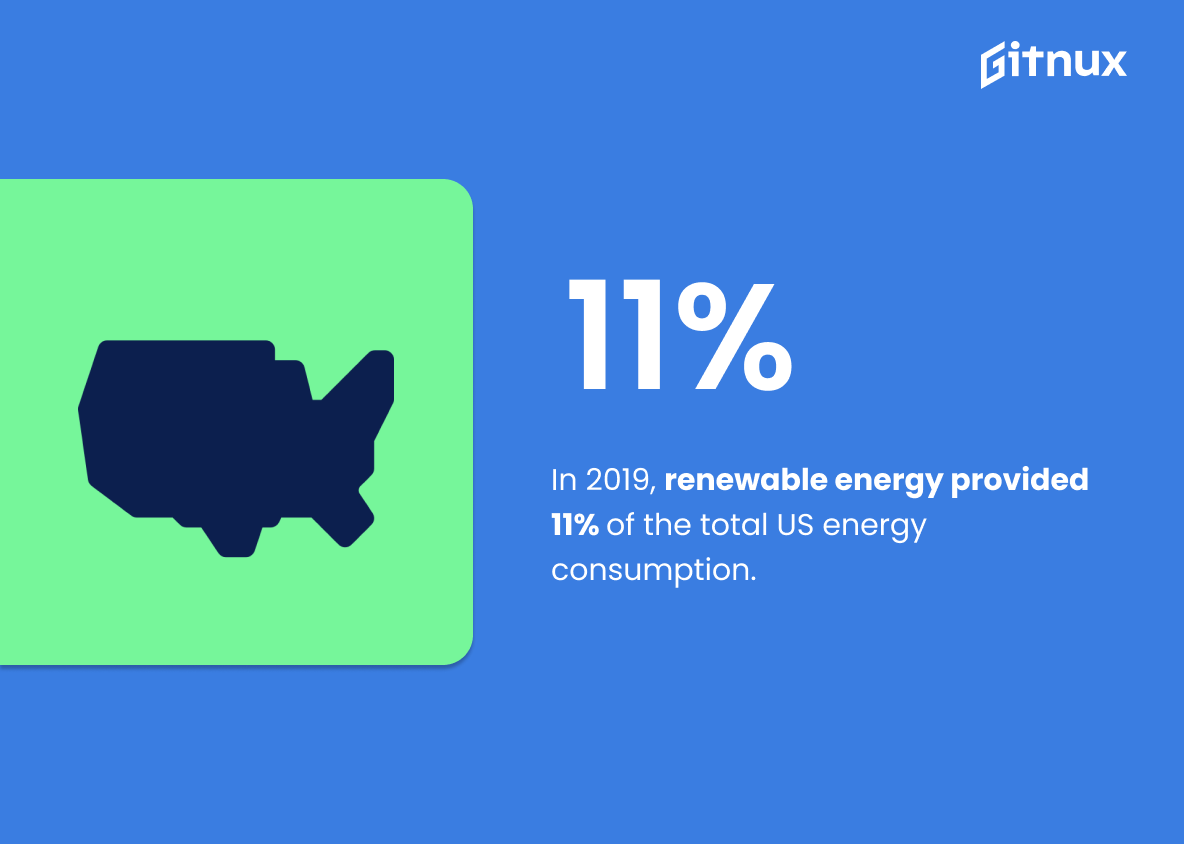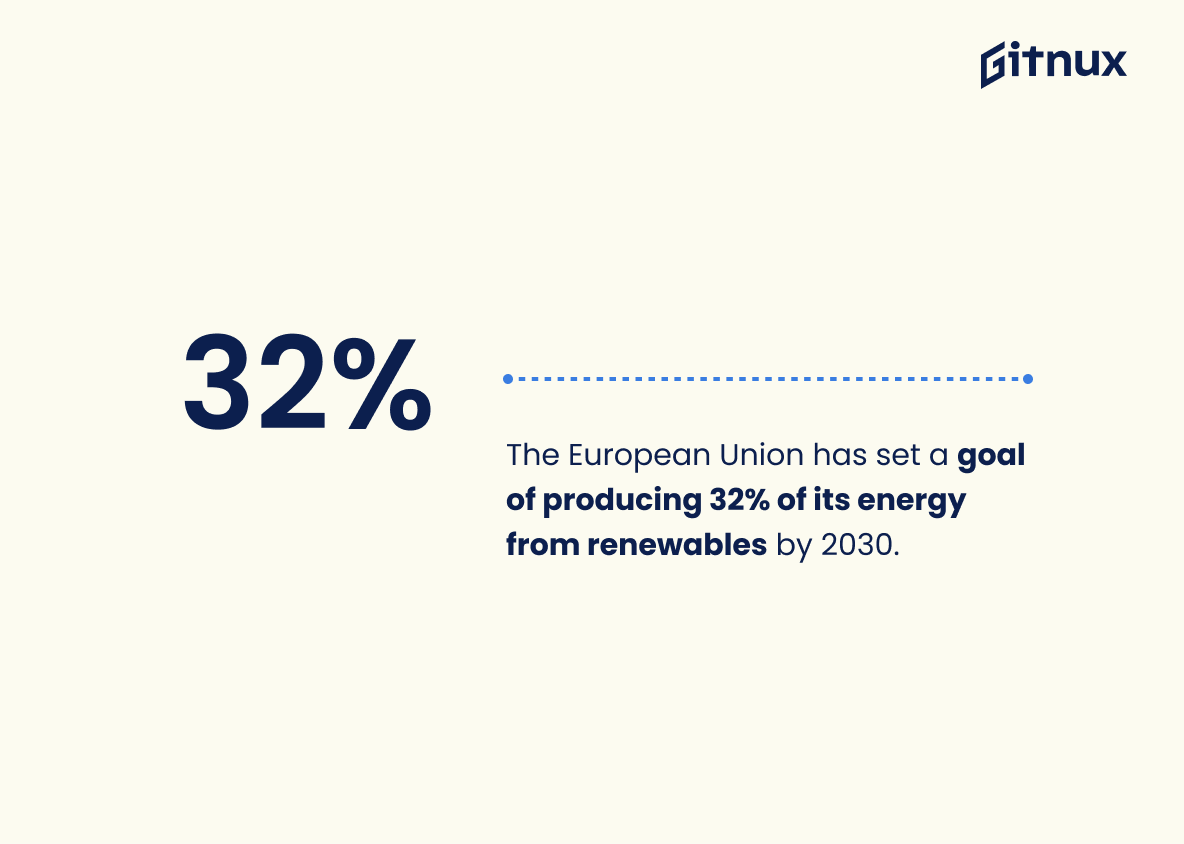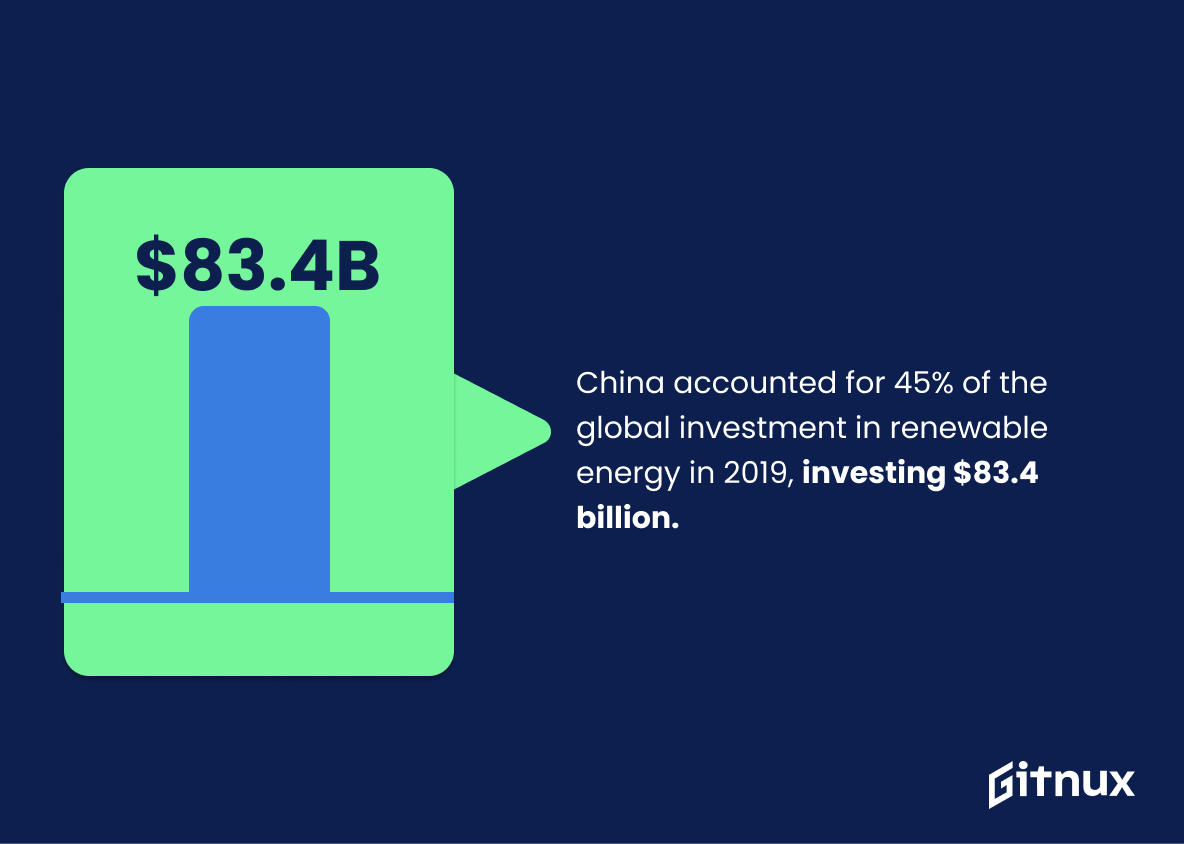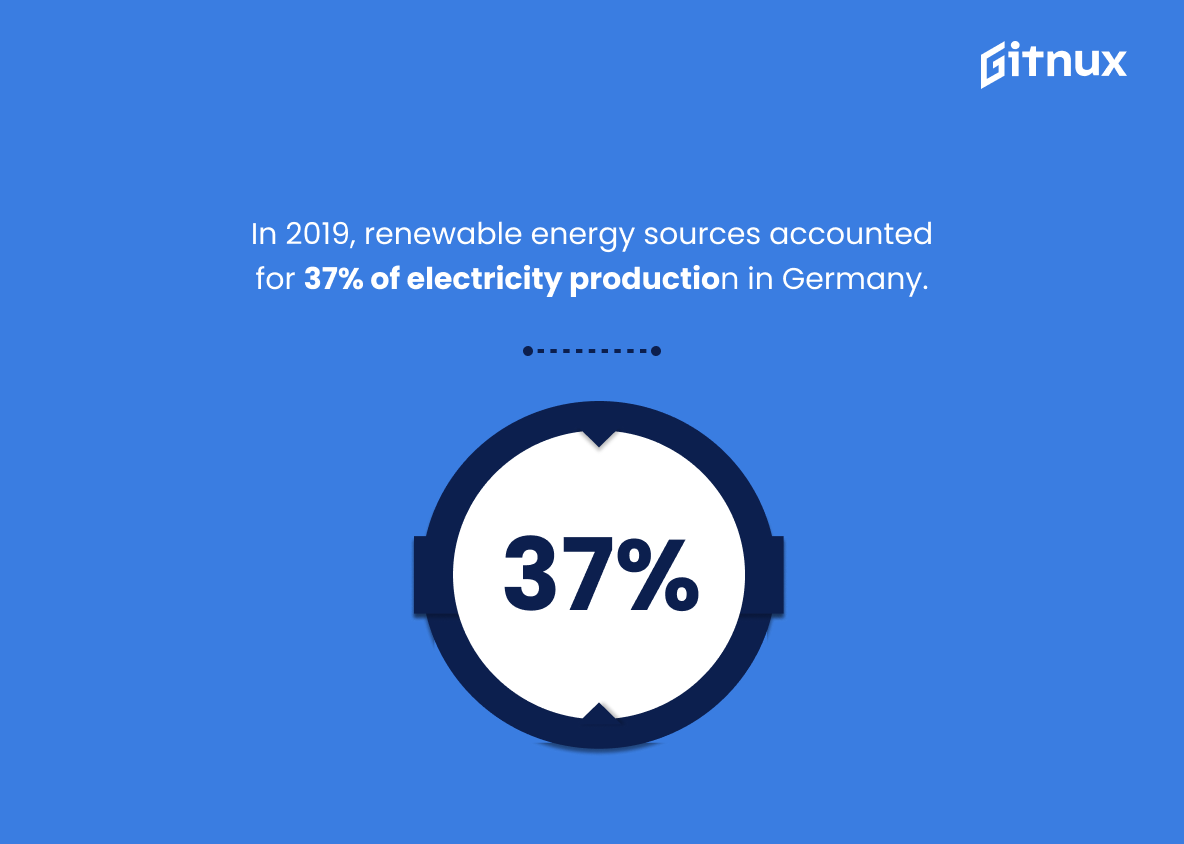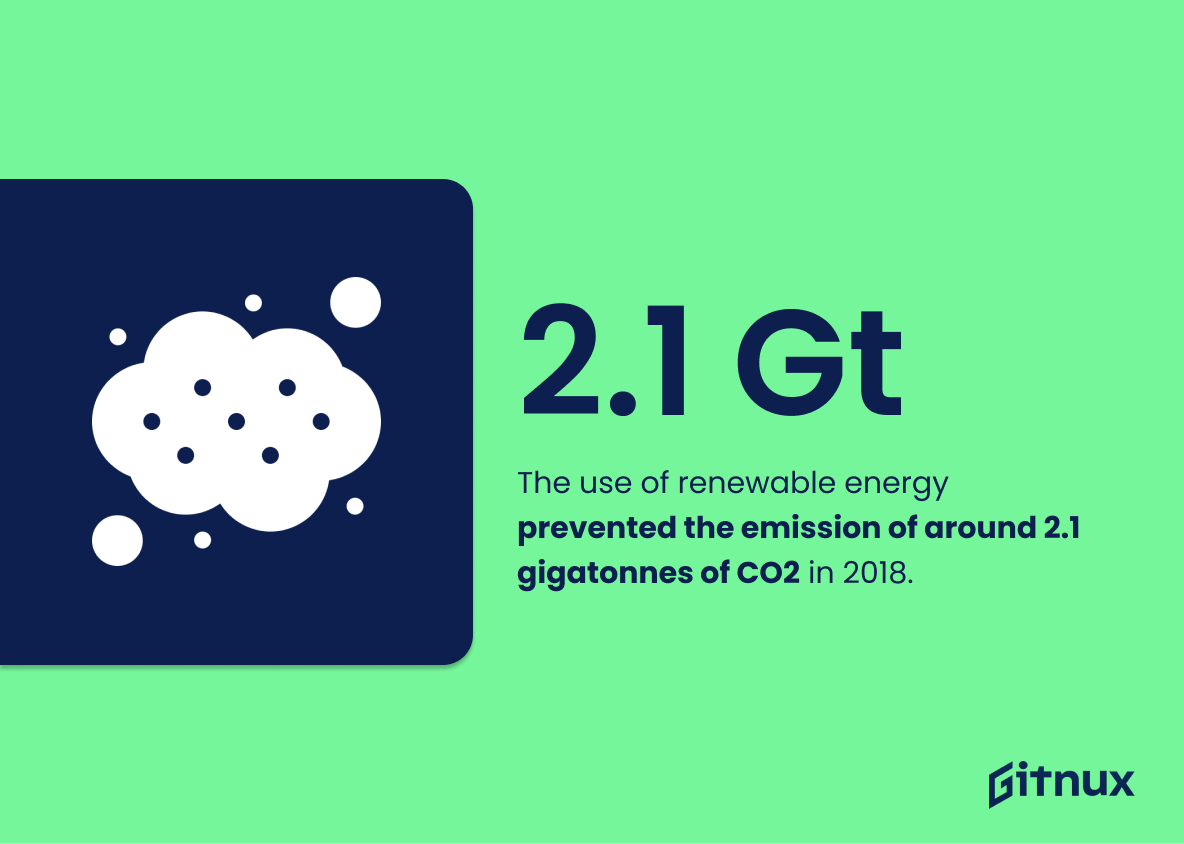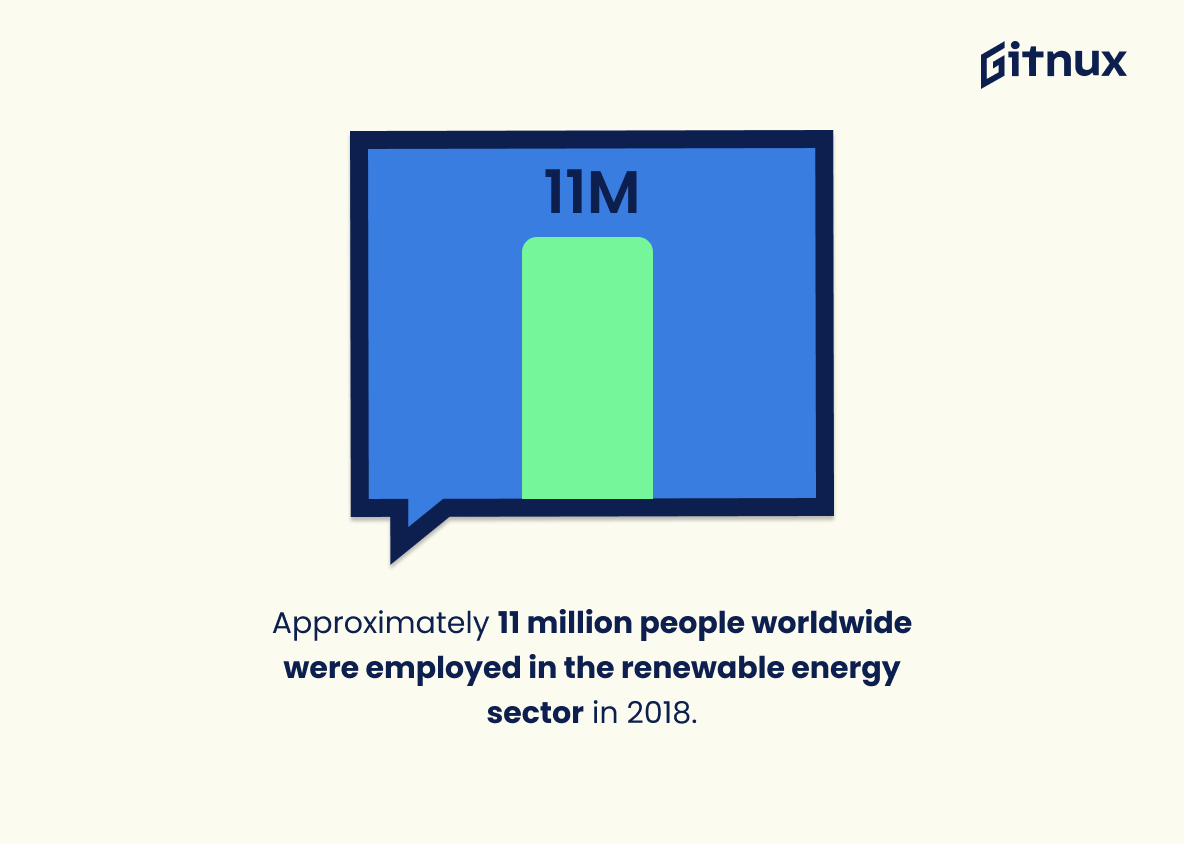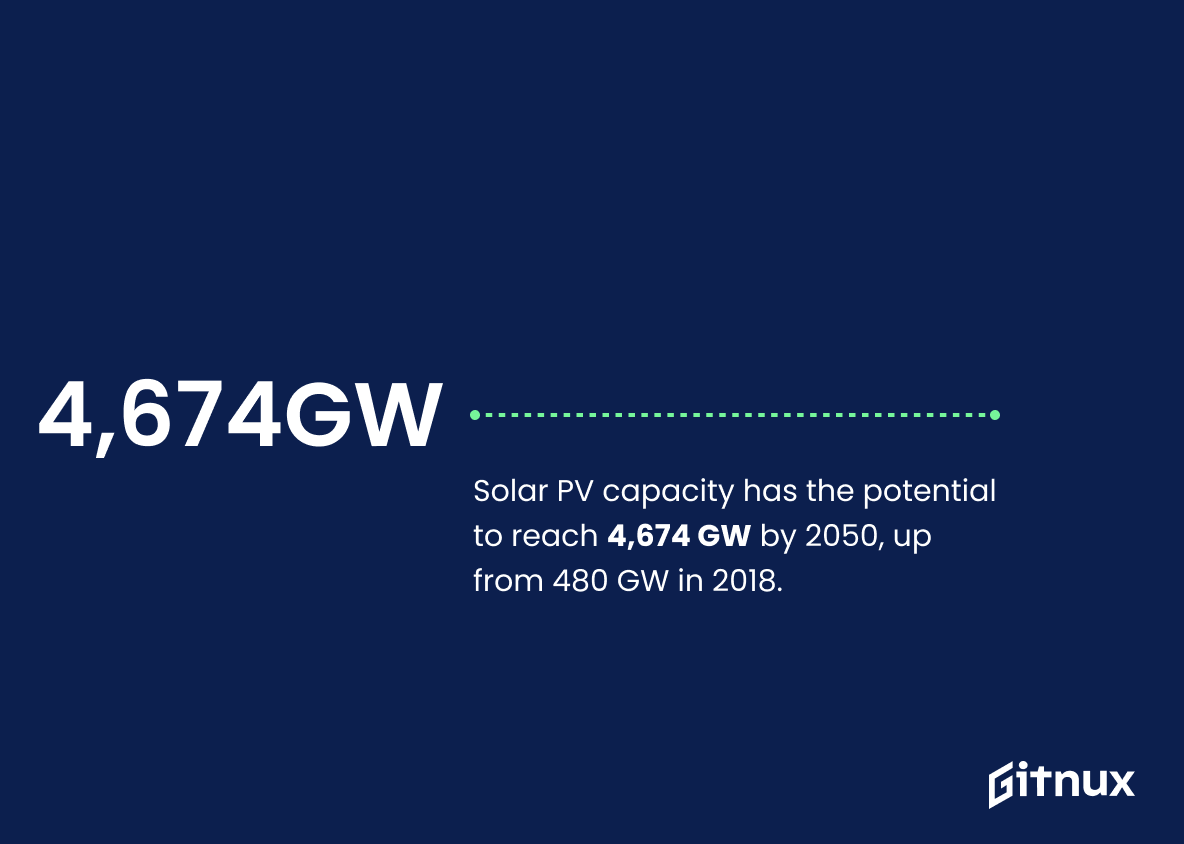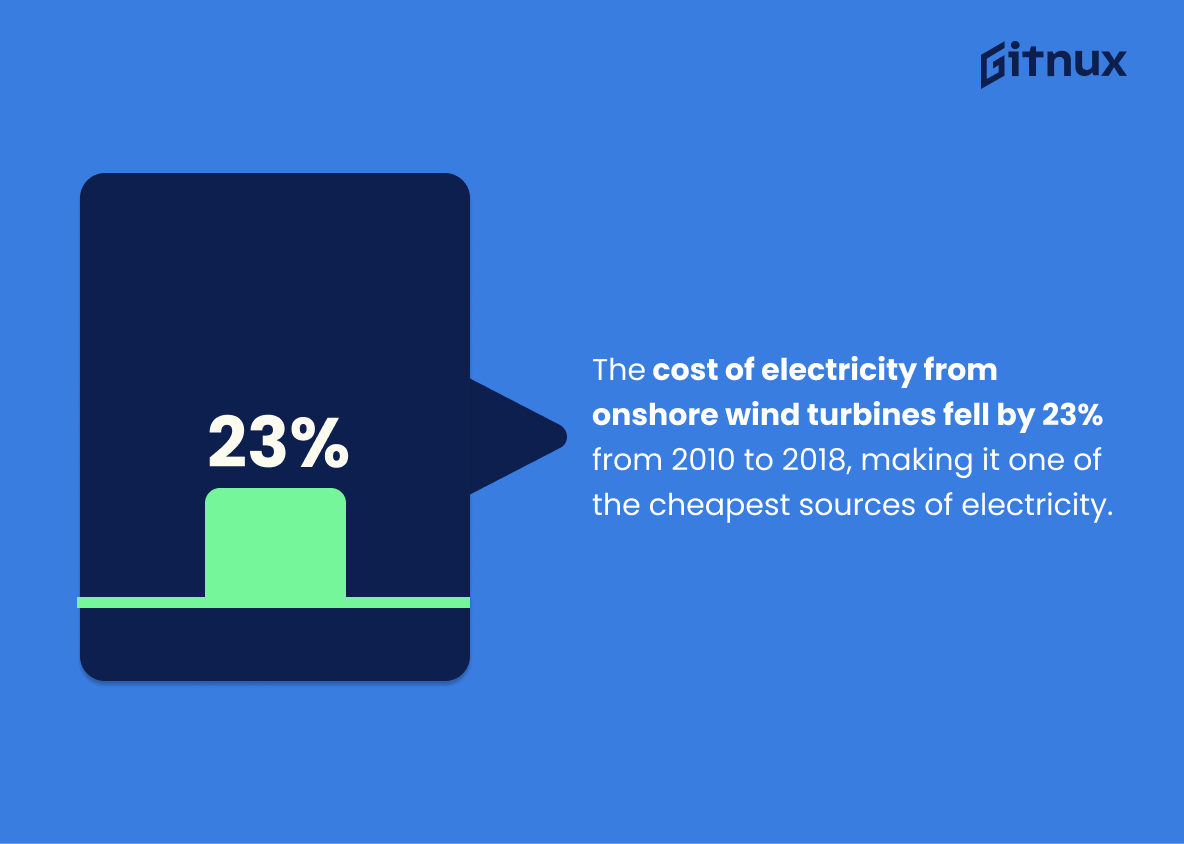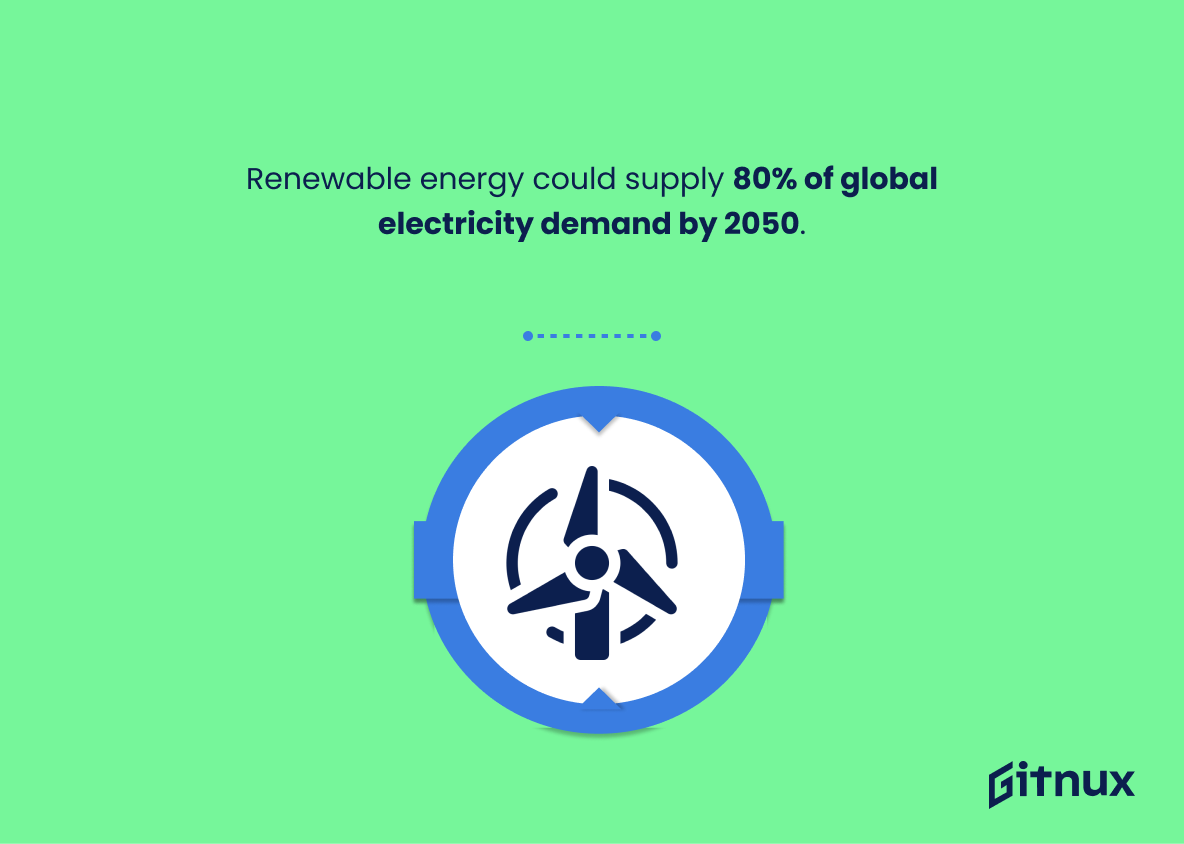Renewable energy sources are becoming increasingly important in the global energy mix. In 2019, renewable energy accounted for around 20% of global electricity production and 11% of total US energy consumption. Biofuels increased 7%, hydropower capacity reached 1,308 GW, solar power generation capacity hit 583.5 GW and wind power capacity rose to 651 GW – all increases from 2018 figures. By 2021, it is expected that global renewable generation capacity will increase by 50%. Renewables also accounted for 139GW of newly installed power capacities in 2018 – nearly two-thirds of the entire world’s new installations. Global investments into renewables totaled $282 billion last year; China alone invested $83 billion while Europe has set a goal to produce 32% of its energy from renewables by 2030. The use of renewable energies prevented 2 gigatonnes worth CO2 emissions in 2018 and employed over 11 million people worldwide that same year. Solar PV could reach 4674GW by 2050 with onshore wind turbines having dropped 23 percent since 2010 making them one the cheapest sources available today. Finally, according to IEA reports 80 percent or more can be supplied through renewables come 2050 with 86 percent being achievable if we make an effort now.
Renewable Energy Statistics Overview
Global hydropower capacity reached 1,308 GW in 2019, generating 4,306 TWh of electricity.
This statistic is a testament to the power of hydropower in the renewable energy sector. It shows that hydropower is a reliable source of energy, capable of producing a significant amount of electricity. This is important for the future of renewable energy, as it demonstrates that hydropower can be a viable alternative to traditional sources of energy. Furthermore, it highlights the potential of hydropower to help reduce our reliance on fossil fuels and move towards a more sustainable energy future.
Solar power generation capacity reached 583.5 GW in 2019, increasing by 100-fold since 2004.
This statistic is a testament to the incredible progress made in renewable energy over the past 15 years. It shows that solar power generation capacity has grown exponentially, from a mere 5.8 GW in 2004 to an impressive 583.5 GW in 2019. This remarkable growth is a clear indication that renewable energy is becoming increasingly viable and accessible, and is a major step towards a more sustainable future.
Wind power capacity reached 651 GW in 2019, a 10% increase from the previous year.
This statistic is a testament to the progress being made in renewable energy. It shows that wind power capacity has grown significantly in the past year, indicating that renewable energy is becoming increasingly viable as an energy source. This is an encouraging sign for those looking to reduce their carbon footprint and make a positive impact on the environment.
By 2021, global renewable generation capacity is expected to increase by 50%, with solar photovoltaic (PV) making up 60% of the growth.
This statistic is a powerful indicator of the potential of renewable energy sources to meet the world’s energy needs. It shows that solar PV is expected to be the primary driver of growth in renewable energy capacity, and that the global renewable energy capacity is expected to increase significantly in the near future. This is an encouraging sign for those who are looking to reduce their reliance on fossil fuels and transition to a more sustainable energy future.
Renewables accounted for 139 GW of newly installed power capacity in 2018, nearly two-thirds of the global total.
This statistic is a powerful indicator of the growing importance of renewable energy sources in the global energy landscape. It shows that renewable energy sources are becoming increasingly popular and are now the primary source of new power capacity. This is a significant milestone in the fight against climate change and a sign that the world is taking the necessary steps to transition to a more sustainable energy future.
In 2019, renewable energy provided 11% of the total US energy consumption.
This statistic is a powerful indicator of the progress being made in the renewable energy sector. It shows that renewable energy is becoming an increasingly important part of the US energy mix, and that the country is making strides towards a more sustainable future. This statistic is a testament to the potential of renewable energy and its ability to provide a reliable and clean source of energy.
Global investments in renewable energy totaled $282.2 billion in 2019, nearly three times the amount invested in new coal and gas power generating capacity.
This statistic is a powerful indicator of the growing trend towards renewable energy investments. It demonstrates that the world is increasingly recognizing the importance of renewable energy sources and is investing in them accordingly. This is a clear sign that renewable energy is becoming a more viable and attractive option for investors, and that the future of energy production is likely to be dominated by renewable sources. This statistic is a testament to the progress that has been made in the renewable energy sector and serves as a reminder of the potential for further growth in the years to come.
The European Union has set a goal of producing 32% of its energy from renewables by 2030.
This statistic is a powerful reminder of the importance of renewable energy in the European Union’s energy mix. It highlights the commitment of the EU to reduce its reliance on fossil fuels and move towards a more sustainable energy future. It also serves as a benchmark for other countries to strive towards, showing that renewable energy is a viable and achievable goal.
China accounted for 45% of the global investment in renewable energy in 2019, investing $83.4 billion.
This statistic is a testament to China’s commitment to renewable energy, showing that the country is leading the way in investing in this important sector. It is a clear indication that China is taking the initiative to reduce its reliance on fossil fuels and move towards a more sustainable future. This is an encouraging sign for the global renewable energy industry, as it demonstrates that the world’s largest economy is taking the necessary steps to reduce its carbon footprint.
In 2019, renewable energy sources accounted for 37% of electricity production in Germany.
This statistic is a testament to the success of Germany’s commitment to renewable energy sources. It shows that the country is making significant progress in its efforts to reduce its reliance on non-renewable sources of energy and is well on its way to achieving its goal of becoming a leader in renewable energy production. This statistic is an important reminder of the progress that has been made and the potential for further progress in the future.
The use of renewable energy prevented the emission of around 2.1 gigatonnes of CO2 in 2018.
This statistic is a powerful reminder of the positive impact renewable energy has had on the environment. It demonstrates that renewable energy is an effective tool in reducing carbon emissions, which is essential for combating climate change. This statistic is a testament to the effectiveness of renewable energy and its potential to help us create a more sustainable future.
Approximately 11 million people worldwide were employed in the renewable energy sector in 2018.
This statistic is a powerful indicator of the growing importance of renewable energy in the global economy. It shows that the renewable energy sector is creating jobs and providing economic opportunities for millions of people around the world. This is an important reminder that renewable energy is not only an environmentally friendly option, but also a viable economic option that can create jobs and stimulate economic growth.
Solar PV capacity has the potential to reach 4,674 GW by 2050, up from 480 GW in 2018.
This statistic is a powerful indicator of the potential for solar PV capacity to revolutionize the renewable energy landscape. It demonstrates the immense growth that can be achieved in the next three decades, with solar PV capacity increasing by nearly tenfold. This is a clear sign that renewable energy is becoming increasingly viable and that solar PV is a major player in the energy transition. This statistic is a testament to the potential of renewable energy to make a significant contribution to the global energy mix.
The cost of electricity from onshore wind turbines fell by 23% from 2010 to 2018, making it one of the cheapest sources of electricity.
This statistic is a testament to the progress made in renewable energy technology, demonstrating that onshore wind turbines are now one of the most cost-effective sources of electricity. This is an important milestone in the journey towards a more sustainable energy future, as it shows that renewable energy is becoming increasingly competitive with traditional sources of energy.
Renewable energy could supply 80% of global electricity demand by 2050.
This statistic is a powerful indicator of the potential of renewable energy to revolutionize the global energy landscape. It demonstrates that renewable energy is not only a viable option for meeting global electricity demand, but that it could be the primary source of energy in the near future. This statistic is a call to action for governments, businesses, and individuals to invest in renewable energy and make the transition to a more sustainable energy future.
By 2050, global electricity demand could be met with 86% renewable energy sources.
This statistic is a powerful indicator of the potential of renewable energy sources to meet the world’s electricity needs in the future. It shows that renewable energy sources could be a viable alternative to traditional energy sources, and that they could be used to meet the growing demand for electricity. This statistic is a reminder that renewable energy sources are a viable option for meeting the world’s energy needs, and that they should be taken seriously as a potential solution to the world’s energy challenges.
U.S. solar generation capacity is expected to more than double by 2030, reaching 109 GW.
This statistic is a shining example of the potential of renewable energy. It shows that solar energy is a viable source of energy that can be used to power our lives and our economy. It also demonstrates the commitment of the U.S. to transitioning to renewable energy sources, which is essential for reducing our carbon footprint and protecting our environment.
Conclusion
The statistics presented in this blog post demonstrate the impressive growth of renewable energy sources around the world. In 2019, renewables accounted for 20% of global electricity production and 11% of total US energy consumption. Global investments in renewable energy totaled $282.2 billion that year, with China accounting for 45%. Renewables also prevented 2.1 gigatonnes of CO2 emissions from entering the atmosphere in 2018 and employed 11 million people worldwide that same year. The cost of electricity from onshore wind turbines has decreased by 23%, making it one of the cheapest sources available today, while solar PV capacity is expected to reach 4674 GW by 2050 – a nearly tenfold increase since 2018. With ambitious goals set by countries like Germany (37%) and Europe (32%), as well as projections suggesting 80-86% global demand could be met with renewables by 2050, these figures are sure to continue rising over time.
References
0. – https://www.gwec.net
1. – https://www.irena.org
2. – https://www.unepdtu.org
3. – https://www.bp.com
4. – https://www.ec.europa.eu
5. – https://www.cleanenergywire.org
6. – https://www.iea.org
7. – https://www.irena.org
8. – https://www.ren21.net
9. – https://www.hydropower.org
10. – https://www.eia.gov
11. – https://www.about.bnef.com
